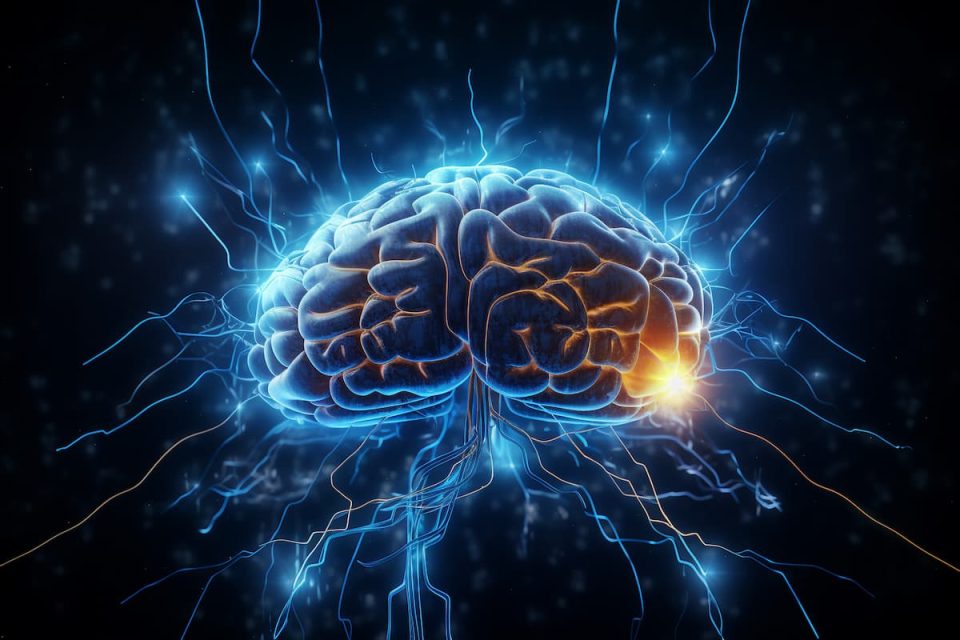Have you ever wondered why, despite trying various treatments, your anxiety still feels like an unsolved puzzle? You’re not alone in this quest for a lasting solution. In this article, we delve into the often-circular journey of traditional anxiety treatments and why they might fall short in providing the relief you truly seek. Let’s explore together why the current methods might be missing a crucial piece of the puzzle and discover an alternative path that offers not just temporary relief, but a profound, lasting change.
Step 1: Using Cognitive-Behavioural Therapy and Other Strategies to Deal with Anxiety
When your first come seeking therapy for anxiety, the typical approach would start with an assessment. This assessment includes understanding the client’s symptoms, history, lifestyle, and any co-occurring issues (like depression or substance use). Based on this assessment, the therapist would recommend the most appropriate treatment approach.
Often, CBT is a first-line treatment due to its strong evidence base and effectiveness for a wide range of anxiety disorders. Here is information about CBT and other treatment options:
Cognitive Behavioral Therapy (CBT):
- CBT is one of the most widely used and evidence-based treatments for anxiety.
- It focuses on identifying, understanding, and changing thinking and behavior patterns.
- Clients learn to challenge distorted or irrational thoughts and beliefs and develop more effective coping and problem-solving skills.
Exposure Therapy:
- A subset of CBT, particularly effective for specific phobias and social anxiety disorder.
- Involves controlled exposure to the anxiety source or its context without the intention to cause any danger.
- Helps in desensitization and reducing fear response over time.
Acceptance and Commitment Therapy (ACT):
- Focuses on accepting thoughts and fears rather than fighting or feeling guilty for them.
- Combines mindfulness skills with the practice of self-acceptance.
Mindfulness-Based Therapies:
- Techniques such as mindfulness-based stress reduction (MBSR) and mindfulness-based cognitive therapy (MBCT).
- Focus on being present in the moment and more aware of thoughts and feelings without judgment.
Anxiety Medication:
- In some cases, particularly where symptoms are severe, medication may be recommended, often in conjunction with therapy.
- Common medications for anxiety include selective serotonin reuptake inhibitors (SSRIs), serotonin-norepinephrine reuptake inhibitors (SNRIs), and benzodiazepines.
Dialectical Behavior Therapy (DBT): combination therapy
- Originally developed for borderline personality disorder, DBT has proven effective for treating anxiety, particularly when it’s linked to emotional dysregulation.
- Combines CBT techniques with concepts of distress tolerance, acceptance, and mindful awareness.
Lifestyle Modifications:
- Encouraging regular physical activity, a healthy diet, sufficient sleep, and reducing caffeine and alcohol intake.
- Stress management techniques like deep breathing, yoga, or meditation.
Support Groups and Peer Support:
- Can be helpful for sharing experiences and strategies in a safe and understanding environment.
Step 2: Discovering the Underlying Roots of Anxiety
When using the above therapies and strategies don’t provide enough help, an individual is often referred to a different type of therapy, for example psychodynamic therapy. Psychodynamic therapy offers a more in-depth and thorough exploration of your anxiety. In therapy, anxiety is often viewed as a symptom of underlying psychological conflicts or issues and an attempt is made to discover those root causes.
Here are some examples of such underlying psychological roots that might be discovered during the course of therapy:
Unresolved Internal Conflicts: Anxiety can stem from internal conflicts, often unconscious, between different parts of the self. For instance, a person might experience anxiety due to a conflict between a desire for independence and a fear of abandonment, leading to feelings of insecurity and anxiousness in relationships.
Repressed Emotions or Memories: Psychodynamic therapy posits that anxiety can arise from repressed emotions or memories, particularly those associated with traumatic or distressing experiences. The anxiety may serve as a defense mechanism to avoid confronting these emotions fearing the pain these emotions will bring.
Early Childhood Experiences: Experiences in early childhood, especially those involving caregivers, can have a lasting impact. For example, inconsistent or unpredictable caregiving might lead to anxiety, as the individual learns to be constantly vigilant and fearful of abandonment or neglect.
Attachment Issues: Problems with attachment in early life can manifest as anxiety in adulthood. Insecure or anxious attachment styles can lead to fears of rejection or over-dependence on others for validation and security.
Conflict Between Ego and Superego: According to Freudian theory, anxiety can result from a conflict between the ego (the realistic part of the mind that mediates between desires and reality) and the superego (the moralistic part that represents internalized ideals and standards). For instance, someone might experience anxiety when they are unable to meet their own strict moral or perfectionistic standards fearing failure.
Unfulfilled Desires and Fantasies: Hidden or unacknowledged desires and fantasies can be sources of anxiety, especially if they are at odds with a person’s self-image or societal norms. The person might feel fearful of being judged by others or fearing legal consequences.
Fear of Loss of Control: Anxiety might also stem from a deep-seated fear of losing control, whether it be emotional control, control over one’s environment, or control in relationships.
Existential Concerns: For some, anxiety can be linked to existential issues such as fears about death, isolation, freedom, or meaninglessness.
Step 3: Uncovering Individual’s Fears
During the course of therapy, various deep-seated fears can be uncovered and discussed. Here’s a list of common fears that individuals often discover about themselves during therapy sessions:
- Fear of Abandonment: This is a common fear where individuals are apprehensive about being left alone or deserted by those they care about.
- Fear of Rejection: This involves the anxiety about being turned down, not accepted, or otherwise rejected in social, professional, or personal contexts.
- Fear of Failure: Many people fear not meeting the expectations they set for themselves or that others have for them, leading to a fear of failing in tasks, relationships, careers, etc.
- Fear of Success: Paradoxically, some individuals fear achieving success because it might bring increased responsibility, expectations, and changes in their life and relationships.
- Fear of Intimacy: This fear revolves around getting too close to others, emotionally or physically, due to concerns about vulnerability, loss of independence, or getting hurt.
- Fear of Losing Control: This involves anxiety about losing control over one’s emotions, thoughts, behaviors, or life situations.
- Fear of Change: A common fear where individuals are apprehensive about changes in life, routines, relationships, or work, often due to uncertainty about the future.
- Fear of Being Judged or Criticized: This is the fear of being negatively evaluated or criticized by others, often leading to self-consciousness or social anxiety.
- Fear of Inadequacy: This fear is rooted in feelings of not being good enough, capable enough, smart enough, etc., often impacting self-esteem and confidence.
- Fear of Death or Illness: Many individuals have a profound fear of death, dying, or falling ill, which can manifest as health anxiety or existential dread.
- Fear of Loneliness: This involves the fear of ending up alone, not having meaningful relationships or connections with others.
- Fear of Emotional Pain: This is a fear of experiencing emotional distress, which can lead to avoidance of situations that might evoke pain, such as confronting past traumas.
- Fear of the Unknown: A generalized fear of anything that is uncertain or unfamiliar, often hindering personal growth or change.
- Fear of Dependency: This is the fear of becoming too dependent on others for emotional, physical, or financial support, which can affect relationships and personal autonomy.
Step 4: Using Strategies to Address Fears
Addressing and managing deep-seated fears in therapy typically involves a combination of several approaches based on the individual’s specific fears, personal history, and what resonates best with them.
Here are some common strategies used in therapy to address and manage various fears:
Cognitive Behavioral Techniques (CBT):
- Cognitive restructuring: This involves identifying and challenging negative, irrational thoughts that underlie fears.
- Exposure therapy: Gradually and systematically exposing oneself to the feared object or context in a controlled way to reduce sensitivity and fear response.
Mindfulness and Relaxation Techniques:
- Mindfulness meditation: Focusing on the present moment to reduce anxiety and fear.
- Deep breathing and relaxation exercises: To reduce physiological symptoms of anxiety and fear.
Building Emotional Awareness and Regulation Skills:
- Journaling: To identify and track fear triggers and responses.
- Emotion regulation techniques: Learning how to effectively manage and respond to intense emotions.
Interpersonal Therapy Techniques:
- Role-playing: To practice and improve interpersonal interactions and reduce fears around rejection or judgment.
- Improving communication skills: To enhance relationships and reduce fears of intimacy or abandonment.
Self-Compassion and Self-Esteem Building:
- Positive affirmations and self-talk: To build self-esteem and counter feelings of inadequacy or failure.
- Self-compassion exercises: Learning to be kind and forgiving to oneself.
Behavioral Activation:
- Engaging in valued activities: To build confidence and reduce avoidance behaviors.
- Goal setting and action planning: To overcome fear of failure and procrastination.
Existential Therapy Techniques:
- Exploring meaning and values: To address existential fears like fear of death or the unknown.
- Acceptance and commitment therapy (ACT): To accept fears as a natural part of life and commit to living in accordance with personal values.
Support Systems:
- Building a support network: Engaging with friends, family, or support groups.
- Therapeutic alliance: Utilizing the relationship with your therapist as a safe space for exploring and managing fears.
Lifestyle Changes:
- Regular physical exercise: To reduce stress and improve mood.
- Healthy sleep habits and diet: To improve overall well-being and resilience.
Breaking the Cycle: Rethinking Anxiety Treatment for Lasting Change
We are Running in Circles while Treating Anxiety
Have you observed how the journey of treating anxiety seems like running in a never-ending loop? It often starts with Cognitive-Behavioral Therapy (CBT), a widely recognized and effective method. But what happens when CBT and other similar strategies provide only temporary relief? Many times, we delve deeper, uncovering the fears at the root of anxiety. Yet, in an ironic twist, we return to the very strategies we began with, trying to deal with these fears through CBT and similar methods. This cycle highlights a critical issue: the current approach helps, but it doesn’t fully solve the problem. Despite uncovering the fears fueling anxiety, many questions remain untouched, leaving us running in circles.
The Unaddressed ‘Why’ of Anxiety – True Causes of Anxiety
We never truly deal with the real ‘why’ of anxiety. Our approach often labels anxiety as ‘wrong,’ ‘inconvenient,’ or ‘faulty,’ and our primary goal becomes getting rid of it. But what if there’s more to understand here? Why do we experience anxiety in the first place, and what purpose could it possibly serve? As a society, we tend to view negative emotions as ‘bad’ and ‘useless.’ This perspective leads us down a path of resistance – fighting against the very feelings that are part of our human experience. When our efforts to eradicate anxiety fail, we shift towards acceptance, as seen in Acceptance and Commitment Therapy (ACT). But even this acceptance often lacks depth, failing to explore the fundamental reasons behind our anxiety.
Anxiety in the Bigger Picture of Life
In our journey to understand and manage anxiety, we often overlook where it fits into the broader picture of our lives. How does anxiety shape us, contribute to our life journeys, and play a role in the development of our identities? Anxiety is not just a symptom to be treated; it’s a part of our emotional spectrum, offering insights into who we are and what we value. It’s a form of fear, and fear plays a crucial role in our lives. To truly see the big picture, to comprehend what is happening to us, why we experience anxiety, and how it all works, we need an alternative, new, holistic approach. This approach should not only address anxiety as a symptom but also explore its role in our personal growth and identity formation. Only then can we step out of the circular path and move forward on a journey of true understanding and healing.
In Conclusion
In your journey to overcome anxiety, if you’ve found that other therapies haven’t quite hit the mark, know that there is a solution available that delves deeper than traditional methods. Imagine a path where you not only manage your anxiety but truly understand and integrate it into a fuller, more balanced version of yourself. This approach offers you the tools to build lasting inner strength, resilience, and a sense of balance, enabling you to stand unshakable in the face of life’s challenges. If you’re seeking a transformative change that brings clarity, purpose, and a renewed joy in life, this might be the turning point you’ve been looking for.


